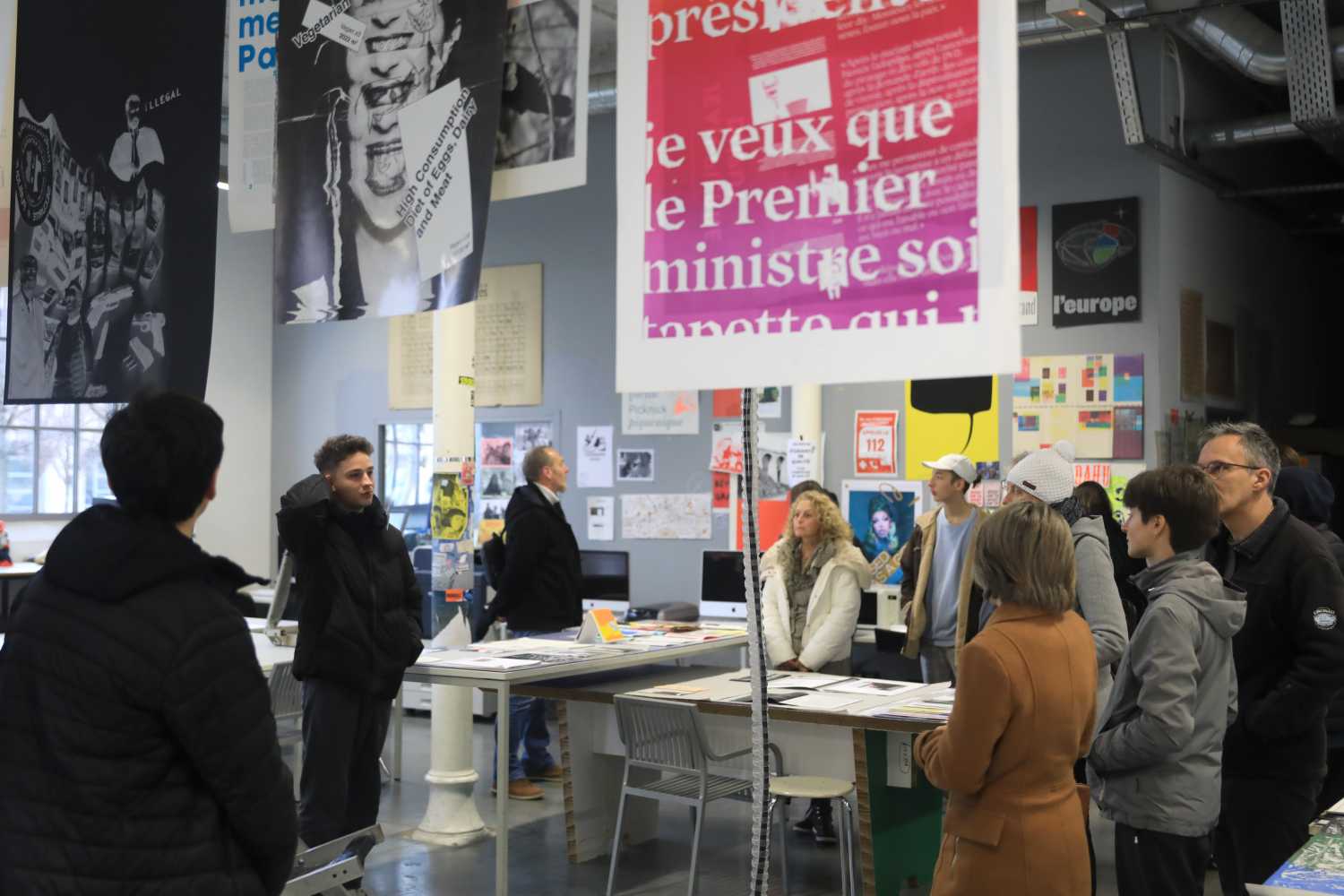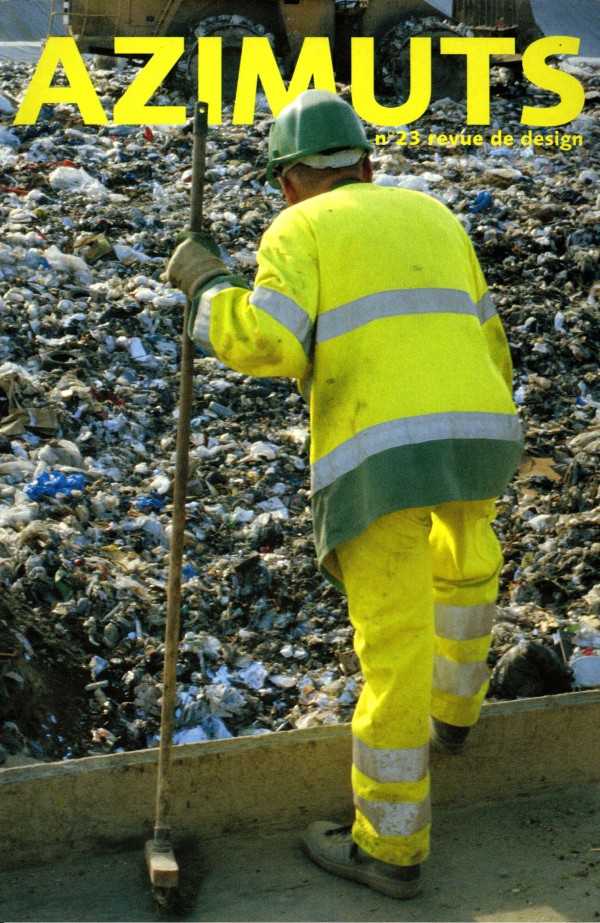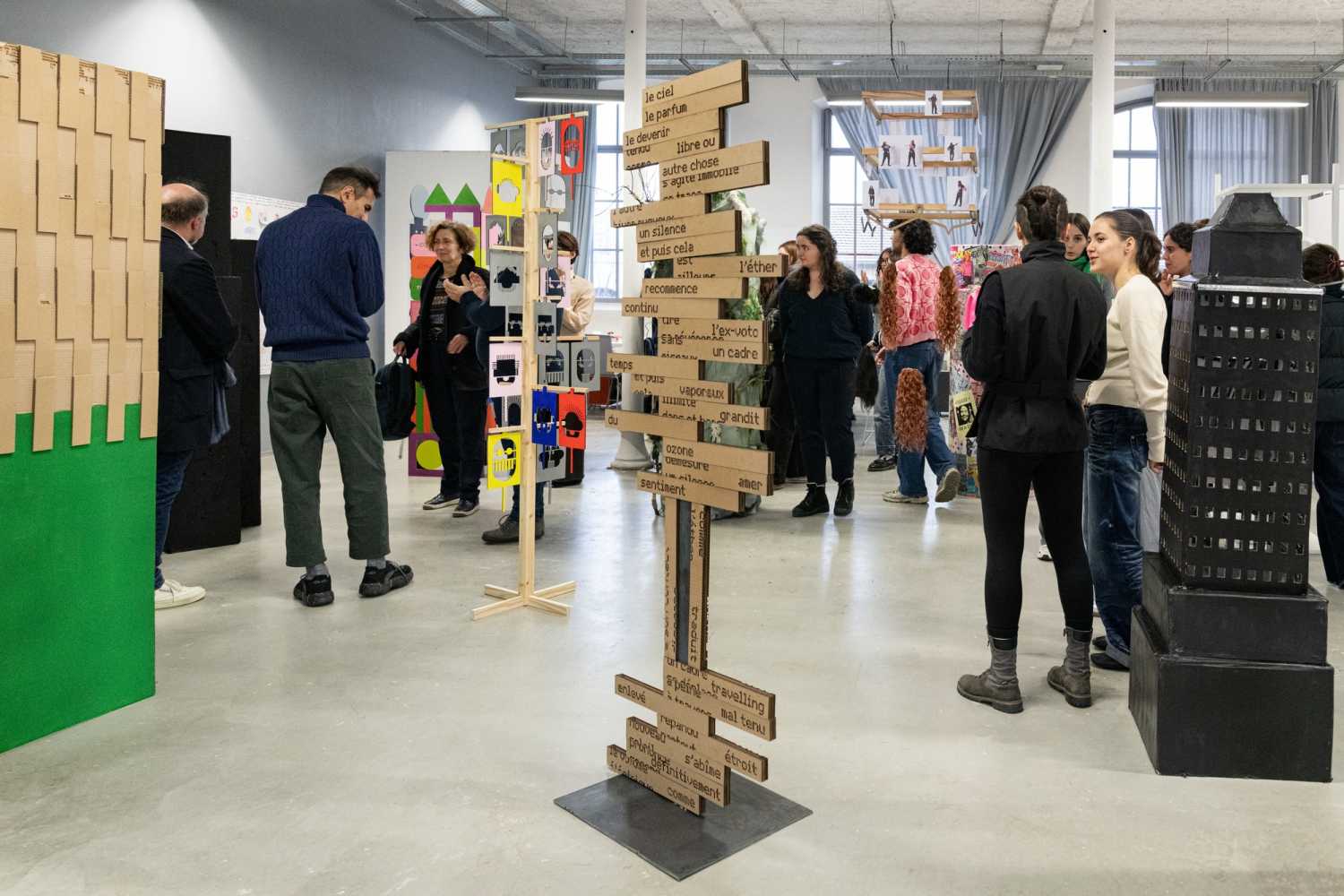
In this 60th issue, Azimuts addresses an issue head-on composite as a material and discursive practice that (re)configures our worlds: "Stories of composite"
Focusing on contributions that explore composites as art and design forms, as research methodologies and practices, and/or as theoretical concepts, issue 60 of the review Azimuts – Design Art Recherche proposes that composites can be understood as a mode of presentation or representation of realities. Different hypotheses have been explored by the researchers and creators gathered here.
Reading their proposals, we can consider that their narratives define composites either as smooth, since the glue that aggregates the various components is invisible, or as rough because the glue, conversely, is visible. Thus, this issue of Azimuts proposes, to understand and define the specific materialities of this glue in that it is a binder, negotiating relationships.
It is then a question of considering these sticky materials as a space, a transition, a break, or even a silence. Or, to quote novelist, poet and philosopher Édouard Glissant, “as a relationship, an opposition or a consequence”.
Contents
p. 2, 79, 161, Editorial, Spacetelling Through Images
p. 7, Open Call, Spacetelling, Composites ?
p. 11, Editorial, Manon Forax, Jules Labatut, Graphic Notice
p. 15, Dossier, Alex Delbos-Gomez, Indiana Collet-Barquero, Interview
p. 29, Dossier, Louise Wambergue-Gouble, The Composite Architecture of Euro Banknotes
p. 39, Dossier, Adrien Payet, The Web Form Outside the Empire of Script
p. 49, Dossier, Colin Riccobene, Hic Sunt Dragones
p. 59, Dossier Gabriele Colombo, Donato Ricci, Composition Practices at the Intersection of Design and Social Research
p. 93, Anthology, Pedro G. Romero – Text Translated by Ernesto Oroza, Mosaïca
p. 99, Dossier, Margaux Crinon, On the Tracks of Planetary Sequencing
p.113, Dossier, Cécile Poulat, Dead Skin
p. 123, Dossier, Davide Marcianesi, BLACK MASS
p. 139, Dossier, Morgane Rousseau
p. 147, Dossier, Leïla Bouyssou, For a Wool Design Made from a Composite Material
p. 159, Synthèse, Spacetelling, Stories of Composites
p. 163, Colophon & Acknowledgements
Editorial
The editorial team wished the magazine to implement the composite, both in its graphic layout and in its two editorials (text and image): the Call for Contributions and the Visual Editorial.
Thus, without further ado, we are offering a composite synthesis of the aggregated articles:
In his interview with design historian Indiana Collet-Barquero, designer Alex Delbos-Gomez discusses the research he conducted as part of his Advanced Diploma in Design Research, where, drawing on Édouard Glissant’s philosophy, he defines composites as baroque. The stratified and sedimented telescoping of materials thus becomes a creative tool.
Philosopher, designer, and web developer Adrien Payet analyses the intrinsic functional and morphogenetic capabilities of the original web composite, based on HTML and CSS. From the field of design, and with a certain political urgency, Payet calls for prioritising the specific qualities of the web in order to resist the domination of scripting.
Researcher in Graphic Design and Visual Studies Louise Wambergue-Gouble analyses the composite architecture developed on euro banknotes to define the composite as a fictional assembly of buildings representing major European artistic movements. This montage is intended as an attempt to create a common identity for the European Union.
Artist Colin Riccobene describes his sculptural method as composite: claiming a roaming practice, he takes material and memorial fragments from the spaces he explores, which he then binds (glues) according to their plastic, technical or even sentimental qualities.
Design researchers Gabriele Colombo and Donato Ricci’s proposal lies at the boundary between composite and composition. Considering that data obtained through research processes are informal and heterogeneous materials, they explore the methods used to reorganise these contents in order to establish new meanings and uses.
Considering translation as a reassembling mechanism, we decided to present a previously unpublished French version of a text by Spanish artist Pedro G. Romero on the “mosaic law” that, according to him, is inherent in all reassembly. Breaking an image, he asserts, implies a law governing its future reconstruction. His text asserts a science of the broken, of the fragment.
In her article, interaction designer Margaux Crinon, drawing a bold parallel between the sampling gesture proposed by the Akai MPC 60 and the sampling gesture orchestrated by researchers in the Svalbard Global Seed Vault, invites us to perceive composite as an ecological practice.
Designer Cécile Poulat treats composites as a narrative system of the situated stories of the stratified spaces that constituted them, starting with a case study: plywood, recovered from the dismantled World Trade Center building in Brussels. She also approaches it as a system allowing the recomposition of new relationships between objects, people, and architectural and urban spaces.
With his article "Black mass" ("Batteries Active Materials Mixture"), interdisciplinary artist and researcher Davide Marcianesi focuses on the toxic – and composite – powder obtained during the recycling or recovery process of lithium-ion batteries: a chemical and cultural mixture, invisible and dangerous, where human and non-human bodies deal with modern narratives and materials in which nature is reduced to an exploitable resource.
In her diploma project, designer Morgane Rousseau uses poems by Ilse Garnier, Giovanna Sandri, Jérôme Peignot and Pierre Garnier to develop composite objects where the typographic elements of concrete poetry become connectors to create new artifacts and uses.
Designer Leïla Bouyssou interprets wool fiber as a composite material and proposes a reversal of perspective: what stories do we want to tell, what objects do we want to shape through wool fiber when we recognise the impact of natural, economic, social and political conditions on animals?
The Spacetelling : Espaces, Fictions, Corps politiques Research-Creation team (Emmanuelle Becquemin, Simone Fehlinger, Ernesto Oroza, Émilie Perotto).
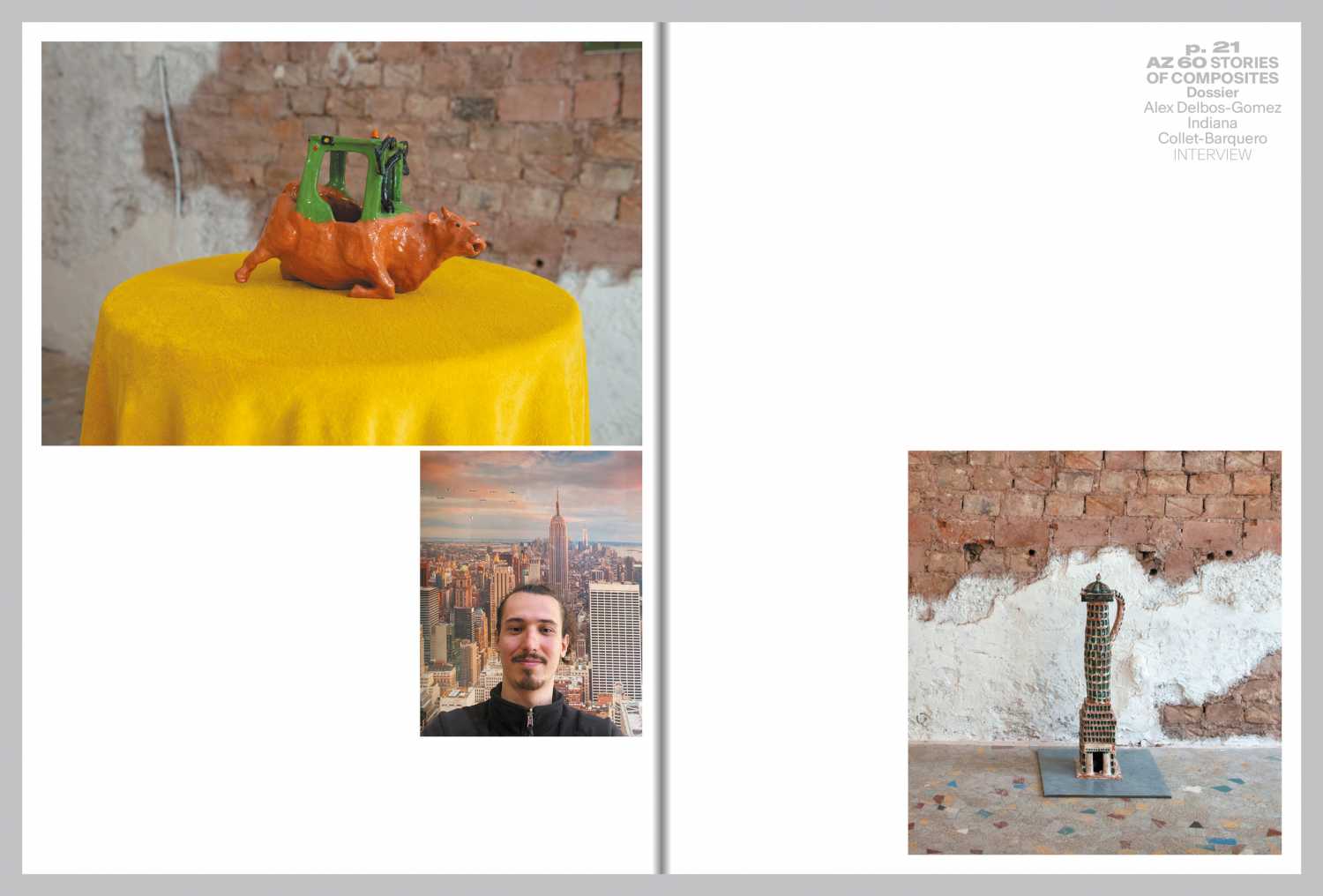
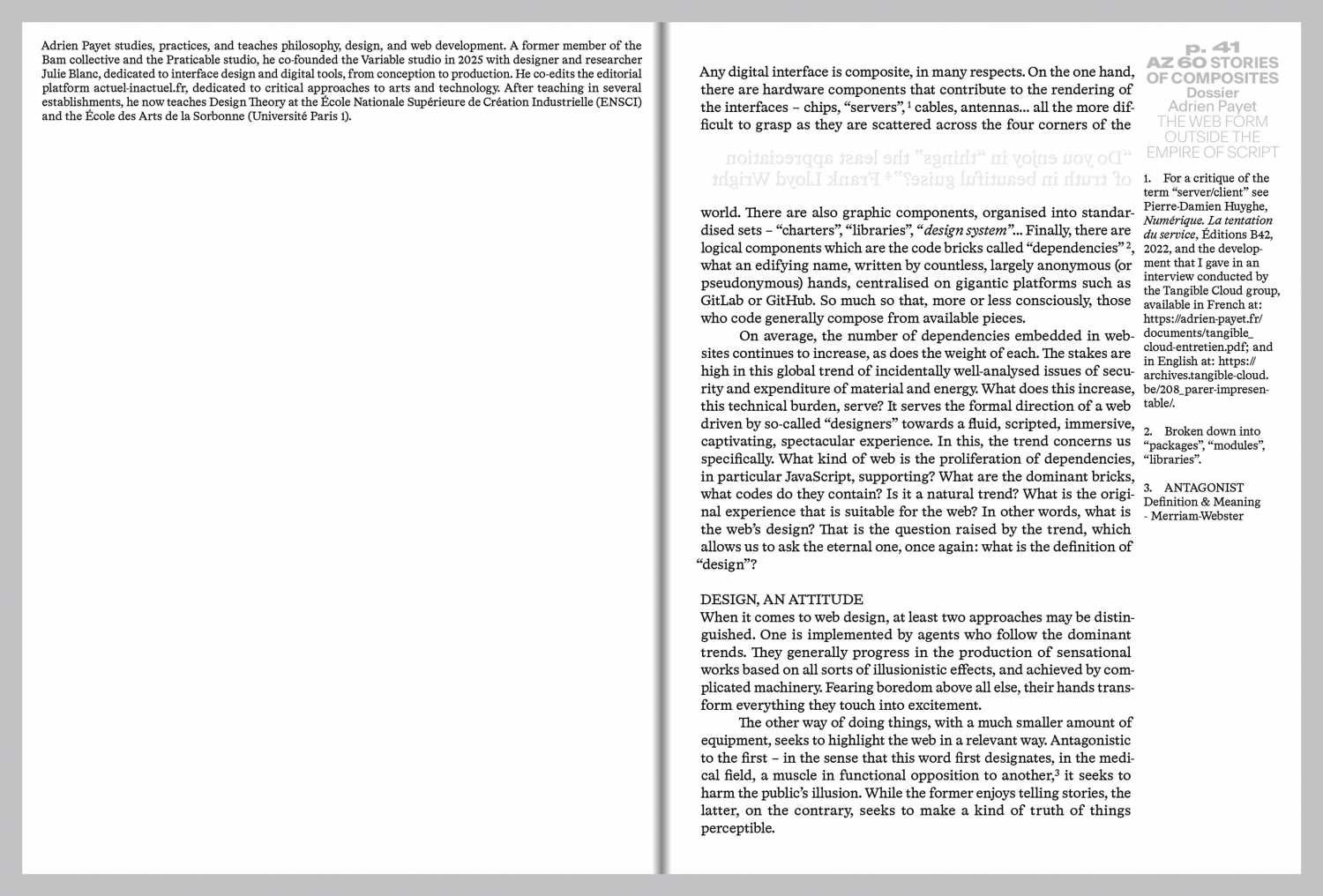

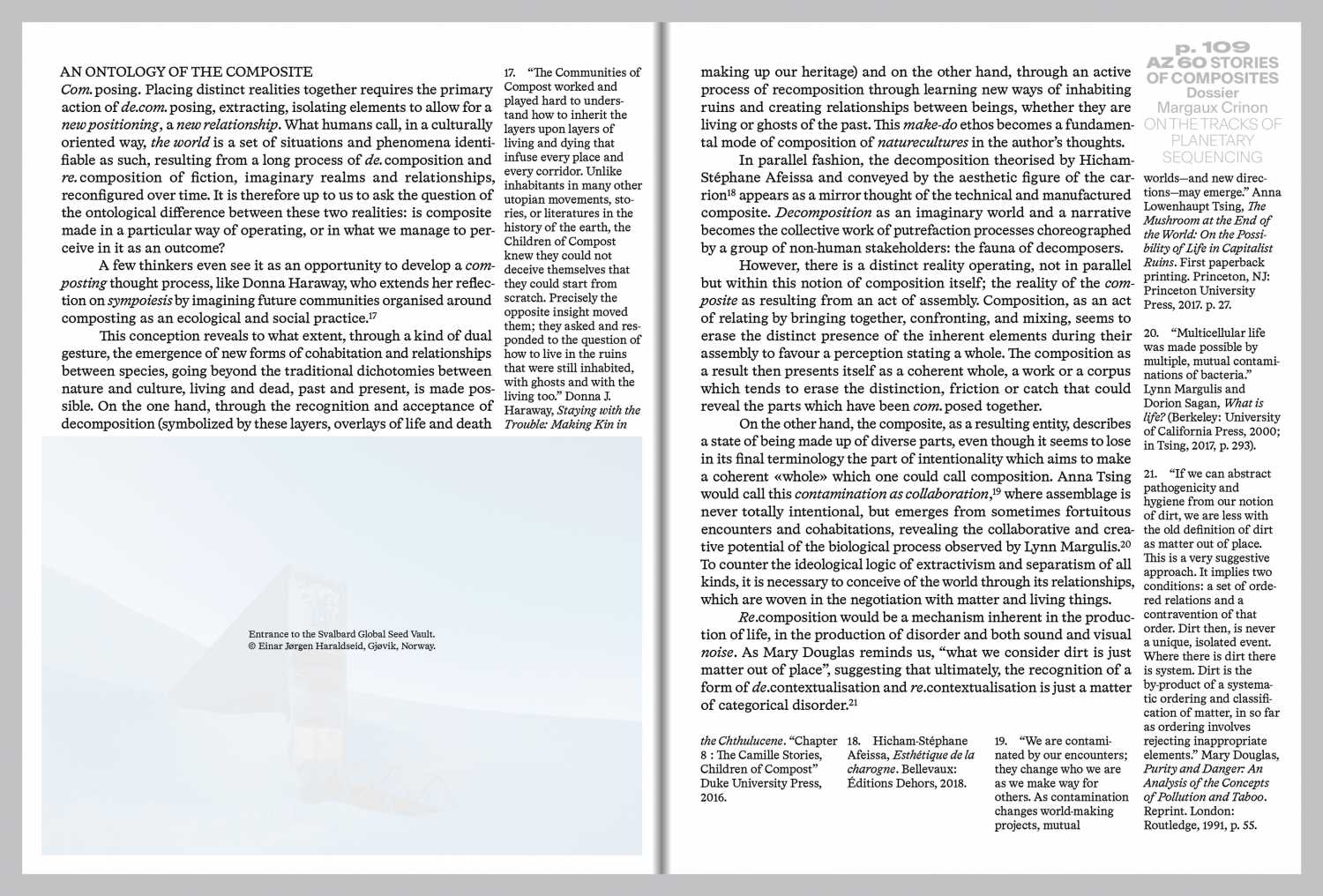
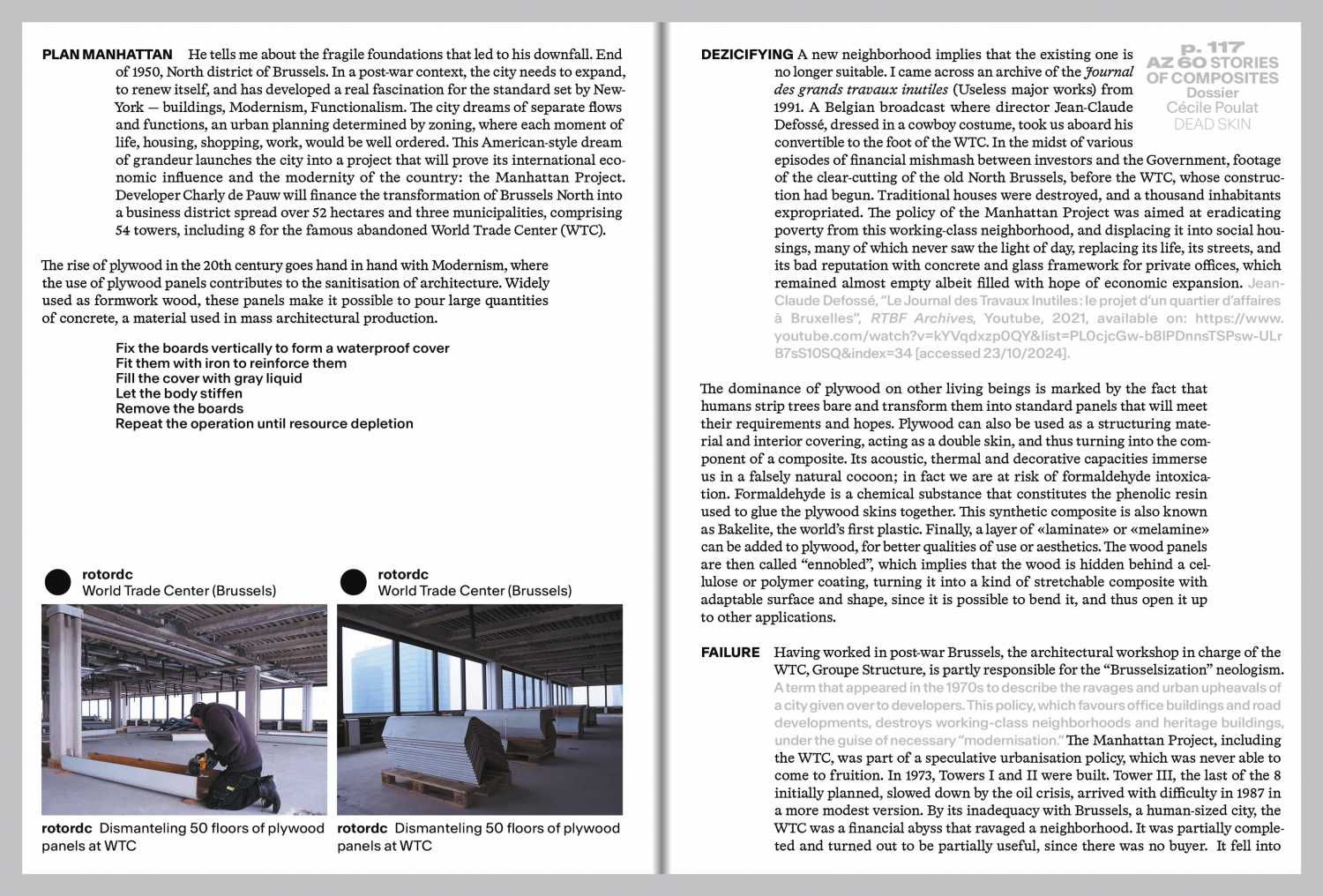
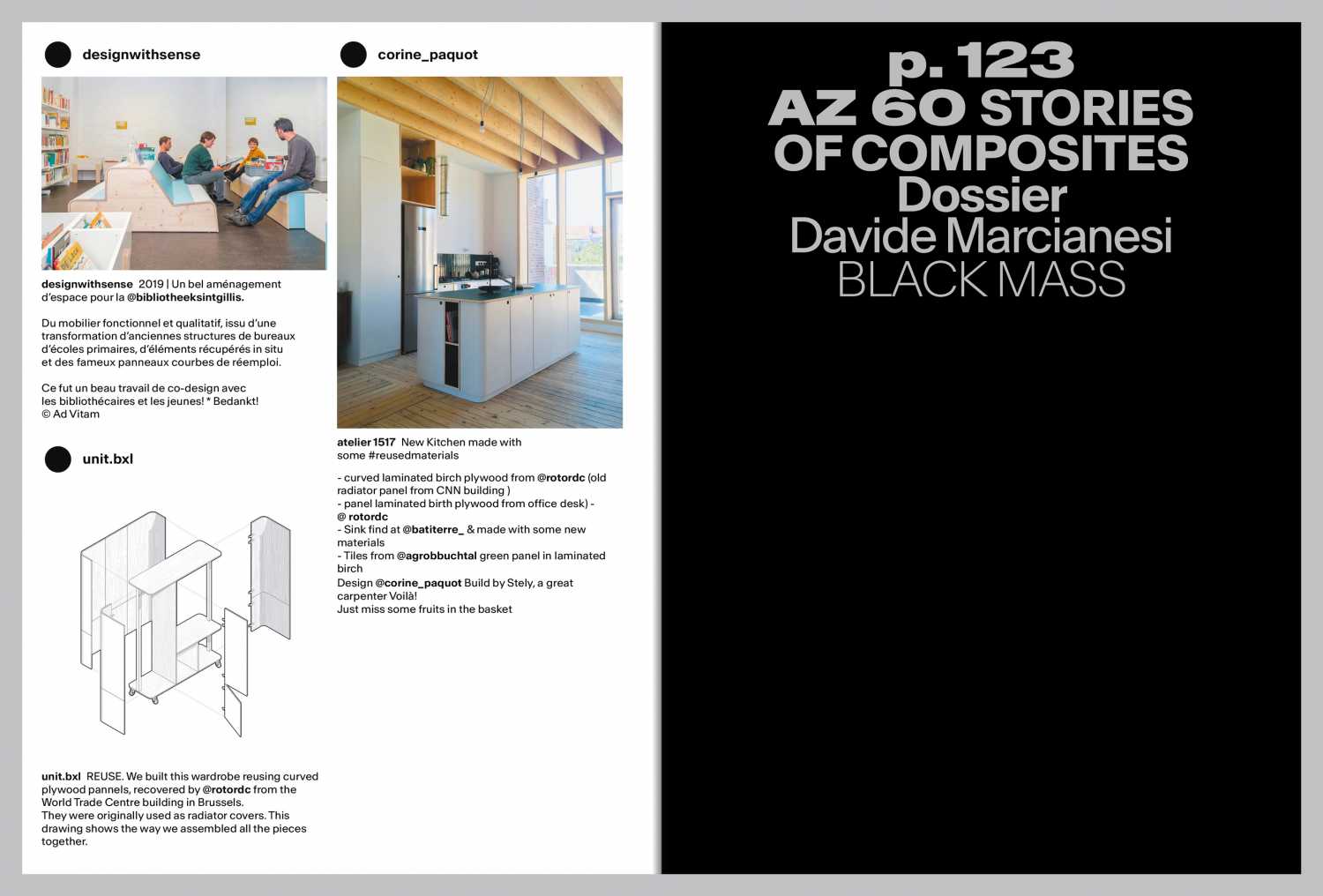

Authors
Emmanuelle Becquemin is a artist, designer, PhD in arts and design, researcher at the Plasticités laboratory (Institut Acte-Panthéon Sorbonne), and professor at Esad Saint-Étienne.
Leïla Bouyssou is a French designer who graduated from the École supérieure d’art et design de Saint-Étienne, after training in socio-anthropology at the University of Paris I Panthéon-Sorbonne. Her practice is rooted in a territorial approach to design, attentive to local and forgotten resources. For several years, she has been conducting research on sheep’s wool, particularly exploring its agricultural applications. In residence at ARCADE – Design à la campagne (Burgundy), she focuses her research on an alternative material, wool, for mulching market garden beds. She initiated a workshop entitled Transforming Wool to consider new tools for transforming fibre, and participated in the Wool and Habitat programme (Parc des Causses du Quercy). In 2025, she continued her work with the project En rang d’oignons supported by the Ateliers Médicis, and joined the Design Matters Lab program to experiment with a mycelium-based bio-material.
An art historian and graduate of the École du Louvre, Indiana Collet-Barquero teaches history and design theory at Ensad Limoges and has participated in the Master’s programme in Contemporary Creation and Cultural Industries with the Faculty of Human Sciences in Limoges since its foundation. Her research addresses questions that are likely to establish an epistemology of research in Art and Design schools. She also participates in numerous juries and scientific committees (recently AD·Rec Faire, encore 2024/25, Saint-Étienne International Design Biennale 2025, Partager. Esthétique Ordinaire et Gestes Collectifs International Conference, January 2024, Université Paris 1 Sorbonne). She has been a nationally elected member of the Evaluation Commission responsible for the body of professors of national higher art schools since 2016, and of the CNESERAC (National Council for Higher Education and Research in Arts and Culture) since 2023. She also works as co-editorial director of the research journal l’Albert·e, published by Ensad Limoges.
Gabriele Colombo is a researcher at the
Department of Design at the Politecnico di Milano. He previously held
postdoctoral positions at the Department of Digital Humanities at King’s
College London, IUAV University of Venice, and the Department of Media Studies
at the University of Amsterdam. He is the co-author, along with Sabine
Niederer, of Visual Methods for Digital
Research (Polity, 2024). He is affiliated with the Visual Methodologies
Collective at the Amsterdam University of Applied Sciences. In 2018, he
received a PhD in Design from the Politecnico di Milano. His research interests
include information visualisation, communication design, and visual methods for
social media analysis.
Margaux Crinon is an associate professor and interaction designer. She practices exploratory design at the Labo•mg workshop, offering projects and workshops that question our environmental perceptions through aesthetic and digital practices. She is currently a doctoral student in Design at the University of Strasbourg affiliated with ACCRA (ED 520 UR 3402) within the Visual Cultures group, under the co-directions of Vivien Philizot and Stefan Kristensen and the supervision of Nolwenn Maudet in HCI, and Caroline Habold of the IPHC in Ecology. Behind the title wwwired wilderness, she proposes to question the place of digital mediators in our relations with wildlife, through a study of the technical apparatuses of design that develop and organise spaces for encounters with wildlife, as well as the resulting imagery. She has been teaching at the University of Strasbourg, in the Master’s Degree in Digital Environments since 2022, as well as in the Bachelor’s in Design. Before that, she taught interactive design at the Villefontaine School of Design. There, she led various art+science workshops exhibited at the Mirage Festival in Lyon, and developed a body of Design Ecologies courses for the Higher Diploma in Applied Arts.
Alex Delbos-Gomez is a design researcher and
ceramic artist based in Paris. He develops research on modernity based on the
notion of "sedimentary baroque", a conceptual framework that explores
the layering of narratives, materials, and forms as a critical strategy. His
work questions the legacy of a Western baroque, exported by colonisation and
then reappropriated as a language of resistance. Through his pieces, which
combine ceramics, everyday objects, architectural references, and digital
infrastructures, he offers a reading in which ornament and formal chaos are
invited to the heart of standardised contemporary systems.
Simone Fehlinger is a designer-researcher, a lecturer at Esad Saint-Etienne, a PhD candidate in visual studies at the University of Strasbourg (UR ACCRA) and in media studies at the University of Potsdam.
Davide Marcianesi is an
interdisciplinary artist based in Milan. His practice focuses on
artistic and scientific research in which he uses speculative design and devises
ephemeral installations. His projects focus on the study of death,
necropolitics, complex interhuman relationships, other species and ecosystems,
from both a postnatural and posthuman perspective. He was selected in 2025 to
be part of Organismo, an independent research platform co-organised by the
TBA21 Academy and the Museo Nazionale Thyssen-Bornemisza. In recent years, he
has collaborated with the Institute for Postnatural Studies (Madrid), Umanesimo
Artificiale (Fano), and 2050+ (Milan) on projects related to these themes. His
works have been featured in the exhibitions we?
(curated by the Institute for Postnatural Studies, Matadero, Madrid, 2023), Nel Profondo Dell’Animo (curated by
Federica Intraligi, ACRE Hub, Milan, 2023), Stand
Alone (curated by Casa Capra, ArtVerona, 2022), wet (by the -ness collective, Aarduork, Venice, 2022), Fantastic Institutions (curated by Linda
Di Pietro, BASE, Milan, 2022) and ISIT.exhi#001
(curated by Arianna Desideri, Spazio In Situ, Rome, 2021).
Ernesto Oroza is an artist, designer, researcher, and professor at Esad Saint-Étienne.
Adrien Payet studies, practices, and teaches
philosophy, design, and web development. A former member of the Bam collective
and the Praticable studio, he co-founded the Variable studio in 2025 with
designer and researcher Julie Blanc, dedicated to interface design and digital
tools, from conception to production. He co-edits the editorial platform
actuel-inactuel.fr, dedicated to critical approaches to arts and technology.
After teaching in several establishments, he now teaches Design Theory at the
École Nationale Supérieure de Création Industrielle (ENSCI) and the École des
Arts de la Sorbonne (Université Paris 1).
Émilie Perotto practices sculpture, holds a PhD in the practices and theory of artistic and literary creation (Aix-Marseille University/ESADMM) and is a professor at Esad Saint-Étienne.
During a stay in Belgium, Cécile Poulat
encountered a specific material whose history confirmed her intuitions. Each
object or material is indeed made up of multiple sentimental or historical layers
of stories. Driven by the meaning that production can take on in an overloaded
world, she obtained a DNSEP Contemporary Art and Contemporary Design at ESADSE
in 2024, and continued her explorations of the object-space in a desire to
bring these buried stories to light. Through various plastic means, she seeks
to weave (or reweave) the links between the human and material worlds, in order
to rediscover a certain connection to reality. Her process involves Doing,
where investigation, encounter, and displacement are at the source of each of
her projects.
Donato Ricci is head of design research at
Sciences Po’s médialab, where he designs research devices that bridge the gap
between design and the social sciences. After contributing to the creation of
the DensityDesign Lab at the Politecnico di Milano, he joined Bruno Latour’s
AIME project at the médialab. His current research explores, through
experimental and situated approaches, environmental (Naturpradi, Future-Obs)
and computational (Cosy/Flat, Algoglitch, Shaping AI, Ecologies of LLMs)
transformations, questioning forms of engagement, collaborative practices, and
the political issues associated with technologies and environments. He teaches
at Sciences Po, the EHESS, the University of Aveiro, and SPEAP – École des arts
politiques. His work has been exhibited internationally, published in various
books, and recognised by several awards, including Malofiej, Filaf, and the ADI
Design Index.
I was born in 2000 in Saint-Étienne and work in Paris. I graduated from the École Supérieure d’Art et Design de Saint-Étienne in 2024. My practice is mainly based on sculpture using materials such as wood, stone, metal, and ceramics, all of which are most often assembled in a composite manner. I usually address notions such as travel, entropy, and memory. A 2025 winner of the Galeries Nomades at the Institut d’art contemporain de Villeurbanne, I am currently working on my first solo exhibition, presented at the Maison Forte de Hautetour in Saint-Gervais-les-Bains, entitled Tendre vitriol.
Pedro G. Romero has been working as an artist since 1985. He was part of the UNIA arteypensamiento project and was a member of the PRPC (Platform for Reflection on Cultural Policy) in Seville. He is a member of the pie.fmc team (Independent Platform for Studies on Modern and Contemporary Flamenco). He participated in the documenta 14 from Athens/Kassel with choreographer Israel Galván and musician Niño de Elche. He directs the "Flamenco y cultura popular" collection of the Athenaica publishing house. Between 2020 and 2022, he directed the films Nueve Sevillas and Siete Jereles. In 2021, he wrote Wittgenstein, los gitanos y los flamencos published by Arcadia. In 2022, the Art Centre of the Reina Sofia National Museum in Madrid presented a retrospective exhibition of his work under the title Máquinas de trovar. In 2023, as a commissioner, he presented Popular at the IVAM, in Valencia (Kadist, Paris). The translation proposed by Ernesto Oroza respects the original in terms of inclusiveness.
Morgane Rousseau, 25, Product Designer. Trained
at Esad Saint-Étienne, I built my career around a DNA (Diplôme National d’Art / National
Diploma in Art) in Object/Graphic/Digital, followed by a DNSEP (Diplôme
National Supérieur d’Expression Plastique / National Higher Degree in Visual
Expression) in Object Design. My practice is based on a multidisciplinary
approach to design, mixing poetic and graphic approaches, with attention paid
to materials and their environmental impacts. Driven by an experimental
approach, I explore new ways of thinking about uses, forms and materials, in
order to offer sensitive, sustainable objects.
Louise Wambergue-Gouble is a doctoral student in Graphic Design and Visual Studies at the University of Strasbourg. She is a member of UR 3402 – ACCRA, in the Visual Cultures research area. Her research aims to demonstrate the profound relationship between images and trust, particularly in the relationship between an institution and its users. In her thesis, she uses the paradigmatic case of the banknote to explain this relationship and establish the concept of fiduciary graphics i.e.banknote graphics.
Spacetelling
This issue is carried by the Spacetelling art and design research team from the Saint-Étienne Higher School of Art and Design. Spacetelling studies the performativity of artifacts (artistic, industrial or scientific), narratives (visual and material) and practices that design our realities in the post-industrial socio-economic context and the current environmental crisis.
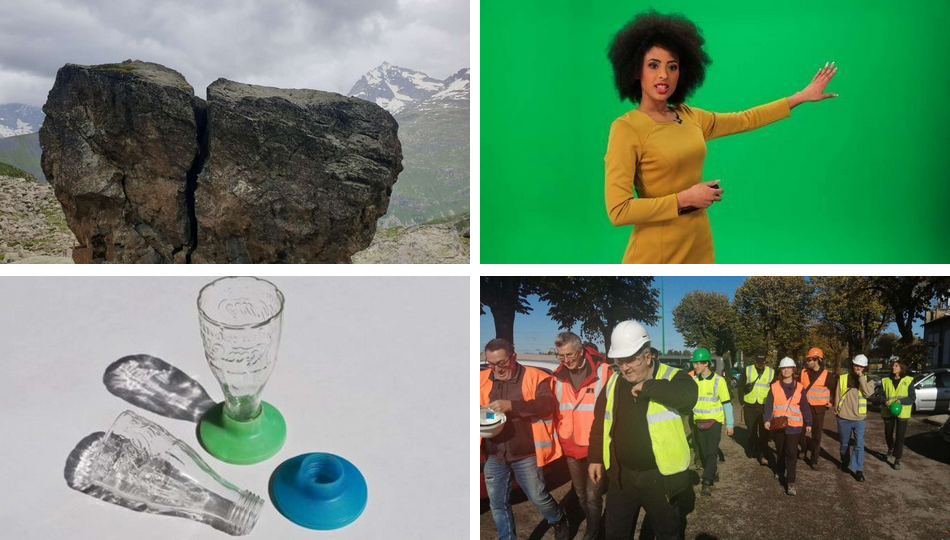
Technical elements

Distributor and broadcaster: les presses du réel
Publisher : Cité du design - Ésad Saint-Étienne
Publication: December 2025
Language: English
Format: digital pdf
Pagination : 164 pages
ISSN : 3077-3253 · 60
ISBN : 9782492621369
Price: 8€99
Availability
Contact
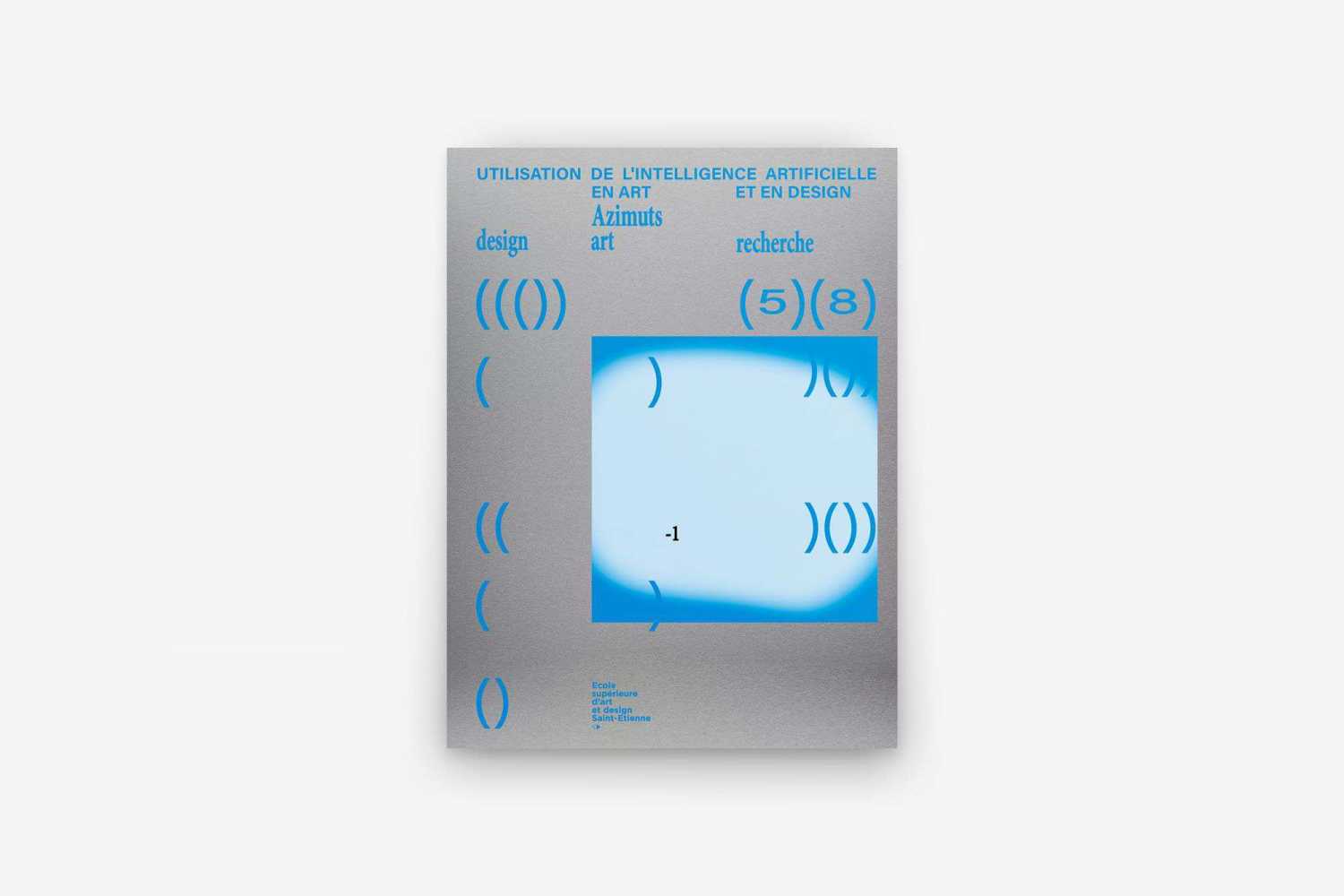
Votre navigateur est obsolète, l’affichage des contenus n’est pas garanti.
Veuillez effectuer une mise à jour.
